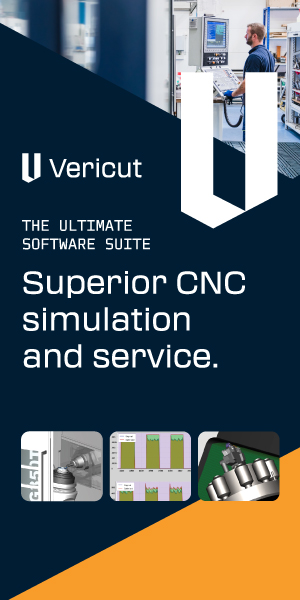We’ve all read about prominent manufacturers leveraging digital transformation to revolutionise operations and offer visibility over their entire organisation. But is this possible for the average SME manufacturer and if so, then how?
It’s estimated that UK manufacturers spend an average of between 21% and 50% of their operating budget on technology investment. Although there is some diversity in the purpose of such investments (ranging from AI to machine learning, sustainability tracking, and predictive maintenance), the manufacturing industry is demonstrably well underway with a transformational digitalisation journey that might have seemed impossible at the turn of the century. Yet, investments made into technology and the outcomes of a successful digitalisation strategy do not always come hand-in-hand, as many manufacturers have learned all too well.
According to a 2023 study, 83% of UK manufacturers have experienced a software investment that failed to meet their expectations. According to the report, the most common reasons for this include: letting the project get too big (24%), poor planning and preparation (24%), and problems with integration (20%). Moreover, 57% of respondents to the study rated themselves as only “somewhat effective” at making investments into software and 69% feeling that their organisation has a digital skills gap. This presents an enormous problem for manufacturers, with clear recognition of the need for investment, but a notable lack of faith in systems implementation, installation, and management.
This isn’t a problem that’s particularly unique to the manufacturing sector either. Across many of the trades and heavy industries there’s communal desire for digitalisation, but a lack of direction, expertise, and existing infrastructure to truly unlock the benefits on offer. With this in mind, it’s of no surprise that organisations are increasingly broadening their networking efforts and not simply looking for the best technology on the market, but also the strategic partnerships that can facilitate the proper deployment, implementation, and management of that technology. In doing so, manufacturing enterprises can still enjoy the benefits of digitalisation but direct their efforts towards what they do best: manufacturing.
Best evidencing the aforementioned challenges would be the digitalisation journey of British Motor Heritage (BMH). The largest and one of the most successful organisations of its type in the world, BMH is the UK’s foremost manufacturer of genuine components for classic British cars. BMH is also no stranger to digitalisation, with investments into such technology dating back many years. And yet, despite continued investment into its technology platforms, it’s only really in the last five years that the organisation recognised the need for expert advice and support in unlocking the outcomes of its digitalisation strategy; for this, BMH turned to Platinum SAP Partner, SEIDOR.
At the time of its partnership with SEIDOR, BMH had already deployed the SAP Business One ERP system but had yet to tap into the full capabilities of what was actually on offer. Although one of the most comprehensive ERP systems on the market, BMH had only been utilising around 10% of SAP Business One’s functionality, with concerns being raised as to whether the system could support the firm’s broader digitalisation strategy. Case in point, the investments had certainly been made, but the outcomes of digitalisation had yet to be unlocked.
As a Platinum SAP Partner with a track record for the successful deployment, management, implementation, and ongoing support for SAP technologies, SEIDOR was perfectly suited to address BMH’s concerns. SEIDOR immediately put “boots on the ground” in a bid to not only understand how and where BMH was using SAP Business One, but more importantly how the system could be better leveraged across all operational areas. Supported by this partnership, BMH has since extended the use of SAP Business One out of a singular point of focus into a system that
taps into just about every element of the business, unifies operational teams into a single ecosystem, and has been instrumental in BMH’s digitalisation success story ever since.
Cleaning up the IT Landscape & Maximising Business Intelligence
Aside from the initial implementation and utilisation of technology, it’s important to understand that the businesses of today may also bear very little resemblance to the same businesses of tomorrow. As businesses grow and evolve, so too do their needs and, perhaps even more importantly, their business intelligence data points. As such, adaptability is key and this can unfortunately create a number of pain points and roadblocks for growing SMEs in particular; this is especially as a result of the diverse range of packages and systems that growing organisations may have accrued as they’ve grown their operations.
Andrew Phillips, Customer Engagement Director for SEIDOR UK offered invaluable insight into this matter and the complications that an overly complex IT landscape can cause:
“It’s important to understand the journey that SMEs go on. When you are a smaller business you’ll often have multiple systems across finance, production, CRM, and payroll. This is fine when you’re a small business as you do need them while you’re growing, but all of a sudden you can find that all of these systems start to work against each other. From an IT expenditure perspective, you also have a number of different licenses for different solutions and you need someone to manage all of these different systems too. It becomes very difficult and a particular challenge is that these disparate systems do end up holding data silos.”
Of course, the simplest solution is and perhaps always will be the best. By consolidating what was once a diverse range of software and technologies into a single, cohesive, ecosystem, then organisations can overcome many of these challenges. Quite interestingly, SAP Business One specifically targets this niche as well by offering an affordable starting point for SMEs which can be adapted, extended, and evolved as business needs grow. Especially as supported by an expert SAP Partner like SEIDOR, it’s perhaps the best starting point for growing manufacturing organisations that acknowledge the need for a long-term digital strategy, but don’t perhaps know its form just yet.
Find out more here: www.seidor.com
Manufacturing & Engineering Magazine | The Home of Manufacturing Industry News
















